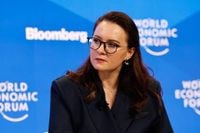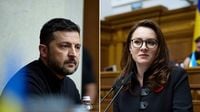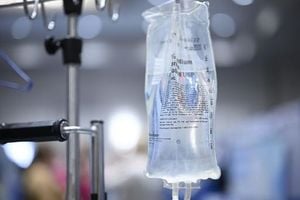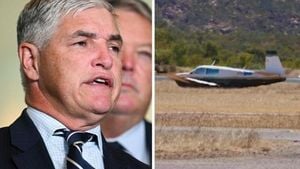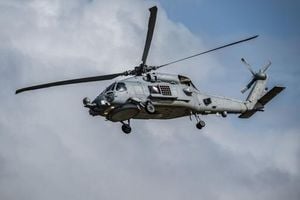Ukrainian President Volodymyr Zelenskyy has announced an ambitious plan to rapidly expand the country’s domestic arms production, aiming to meet half of Ukraine’s weapons needs within six months. Speaking at the Ukraine Recovery Conference 2025 in Rome on July 10, Zelenskyy emphasized the urgency of boosting Ukraine’s military capabilities amid ongoing conflict with Russia.
“What we need is greater capacity to push the war back onto Russia’s territory — back to where the war was brought from,” Zelenskyy said in his nightly video address on July 16. He revealed that domestic defense manufacturing already accounts for almost 40% of the weapons used by the Ukrainian military, highlighting the importance of self-reliance as Western weapon shipments remain uncertain in both quantity and timing.
This push for enhanced domestic production coincides with a significant reshuffle in Ukraine’s government, with a new cabinet approved on July 17. The new administration, led by Prime Minister Yulia Svyrydenko, who attended the World Economic Forum in Davos earlier this year, is expected to redouble efforts to secure fresh financial resources and scale up arms production as the war drags on.
Meanwhile, Switzerland revealed on July 17 that the U.S. Department of Defense has informed it of a reprioritization of its order for five Patriot air defense systems, originally scheduled for delivery starting in 2027. These systems, worth billions, will be diverted to support Ukraine’s urgent need to bolster its air defenses against increasingly intense Russian aerial attacks. The Swiss Defense Ministry acknowledged the delay but could not specify how many systems would be affected or the exact timing of the deliveries.
U.S. President Donald Trump has agreed to send these weapon systems to Ukraine, but European countries will finance the purchases. The U.S. Ambassador to NATO, Matthew Whitaker, stated on July 17 that while he could not provide a precise timeframe for when these weapons might arrive, American-made defense equipment will be sold to European allies, who will then supply them to Ukraine. “We are all moving with haste to facilitate this and get this done. Things are actually moving very quickly, but I can't verify a date that this will all be completed,” Whitaker said in Brussels.
Further coordination among Ukraine’s allies is underway. British Defense Secretary John Healey and his German counterpart Boris Pistorius announced they will chair a meeting of Ukraine’s allies on July 21 to discuss Trump’s weapons plans. U.S. Defense Secretary Pete Hegseth and NATO leader Mark Rutte will also attend this Ukraine Defense Contact Group meeting, underscoring the high-level international commitment to supporting Ukraine’s defense.
NATO’s Supreme Allied Commander Europe, General Alexus Grynkewich, confirmed on July 17 at a military event in Wiesbaden, Germany, that preparations for weapons transfers to Ukraine are underway. He noted that NATO is collaborating closely with Germany to facilitate the transfer of Patriot missile systems and has been ordered to expedite the process. “We’re already in preparation phase for the first tranche of capability to start moving with respect to Patriots,” Grynkewich said. However, he declined to disclose the number of weapons being transferred, citing classification.
German Defense Ministry spokesperson Mitko Müller added on July 16 that an expert working group is swiftly but cautiously discussing the concrete planning of these transfers. He stressed that the exact modalities and which systems will be supplied are still being finalized, and he could not confirm that any shipments are currently en route to Ukraine.
These developments come as Russia intensifies its summer offensive, relentlessly pounding Ukrainian cities with hundreds of drones, ballistic missiles, and cruise missiles. Ukraine, in turn, has developed its own long-range drones to strike deep into Russian territory. According to Ukraine’s defense ministry, Russian air defenses intercepted 122 Ukrainian drones overnight between July 17 and 18, causing flight disruptions at Moscow and St. Petersburg airports. Most drones were reportedly destroyed over the Russian border regions of Bryansk and Kursk.
On the same nights, Russia launched 64 Shahed and decoy drones against Ukraine, targeting the industrial Dnipropetrovsk region and killing at least one person. The ongoing drone warfare underscores the escalating aerial dimension of the conflict, making improved air defense capabilities, such as the Patriot missile systems, all the more critical for Ukraine’s survival.
Amid these military developments, Russia and Ukraine continue limited humanitarian cooperation. On July 17, Russia sent 1,000 bodies, including some of Ukraine’s fallen soldiers, back to Ukraine, while receiving 19 bodies of Russian soldiers in return. This exchange was part of a deal reached during direct peace talks last May and June, which yielded few other agreements.
On the diplomatic front, the UK and Germany have deepened their defense partnership. On July 18, Sir Keir Starmer and German Chancellor Friedrich Merz signed a new defense treaty in the UK. Starmer highlighted their joint leadership in rapidly supplying Ukraine with vital military equipment alongside the US and other allies. Merz praised Trump’s initiative to provide weapons to Ukraine, emphasizing Germany’s desire to contribute meaningfully while seeking clarity on how the US will replenish European weapon systems transferred to Ukraine.
Merz also remarked on the broader geopolitical context, noting that Russia’s actions have shaken the European security architecture, especially after Britain’s exit from the European Union. “It is under these conditions that we aim to secure the freedom, prosperity of the people of both our countries,” he said, underscoring the treaty’s significance as “a partnership with a purpose.”
However, tensions remain high. Russia’s State Duma international affairs committee chairman, Leonid Slutsky, issued a stark warning regarding NATO’s military posture near Russia’s Baltic enclave of Kaliningrad. Slutsky cautioned that any NATO attack on Kaliningrad would provoke a response in line with Russia’s nuclear doctrine. His comments came after U.S. Army Europe and Africa Commander General Christopher Donahue noted NATO’s unprecedented capability to neutralize Kaliningrad swiftly from the ground.
Slutsky described such rhetoric as “a plan to unleash World War Three with subsequent global standoff with no winners,” accusing NATO of threatening global security and stability. This exchange reflects the precarious balance of military posturing and diplomatic signaling amid the ongoing conflict.
As Ukraine races to bolster its defenses through domestic production and allied support, the international community’s coordination efforts, including arms transfers and defense treaties, reveal a complex web of military, political, and humanitarian challenges. The coming months will be critical in determining whether Ukraine can strengthen its position and push back Russia’s advances, while avoiding escalation into a broader confrontation.
